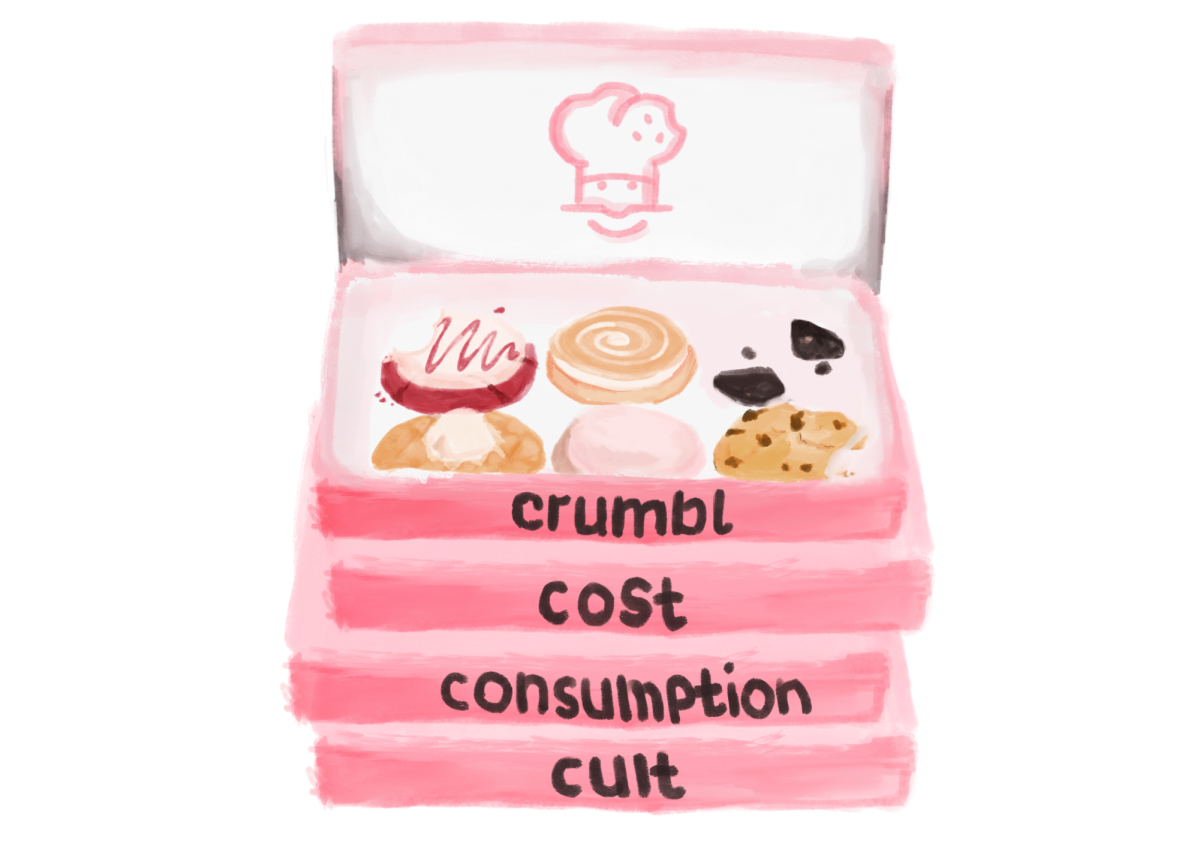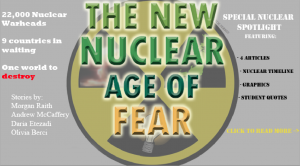Other articles in our Nuclear Feature:
- Click Here to read: “The Divide between Nuclear War and Inner Peace”, by Daria Etezadi
- Click Here to read: “Living in Fear”, by Olivia Berci
- Click Here to view: GRAPHIC: Bomb vs. Energy, by Kyle Van De Kamer
- Click Here to view: GRAPHIC: The Nuclear Timeline
Nuclear Energy Has Too Much Room for Error
by Morgan Raith
Nuclear technology is considered clean to some, but if we look behind the “clean” steam rising from the concrete smokestacks at any nuclear energy facility, there is fault to be found.
The main source of a nuclear reactor’s oomph comes from the fission of uranium atoms. Uranium is a non-renewable resource that needs heavy machinery to be mined out of open pits. The fossil fuels used by trucks, excavators, and other mining machinery pollute the atmosphere, while the mines themselves cause irreversible damage to the habitats that once thrived there.
One nuclear plant has the power to fuel an entire city, but is equally capable of rendering the surrounding watersheds and soils entirely useless. Since the end of the Cold War our government has been grappling with the logistics of cleaning up the hazardous waste accumulated from the production of nuclear weapons.
Though elementally different in its production and use for bulbs and not bombs, nuclear energy technology is just as capable of causing environmental and civil catastrophes as nuclear weapons of mass destruction
Today, we still haven’t implemented a proper solution for containing the annual 2,000 metric tons of toxic waste from modern nuclear power facilities in the U.S.
If containment of nuclear waste fails, hundreds of acresof land surrounding the facility are rendered uninhabitable, and if the waste gets into a waterway it can contaminate water supplies for a region as large as the entire Pacific Northwest.
As we have seen in recent past with the incidents at Chernobyl, Three Mile Island, and the Fukushima Daiichi Plant, this generation of nuclear power still is susceptible to natural disasters and ultimately unstable, when there is so much that we cannot predict or plan for.
Human error is another problem surrounding nuclear power. The safe use of nuclear energy and proper disposal of toxic waste is entwined with thousands of things that can go wrong, no matter how bullet proof we think a system is.
If engineers were capable of creating perfect facilities that operated and processed nuclear waste without fail, this would be a much better source of energy. We just aren’t ready for it yet. We still have so much to learn. Learning by mistakes is fine, but when those mistakes cause the destruction of cities, habitats, and water supplies it’s time to step back and think a little harder about what extra steps of precaution could have been taken.
Instead of spending billions on new nuclear power facilities or updating and cleaning up the old ones, we should focus our attention on the ways that we can efficiently and safely harness inexhaustible forms of energy like solar and wind power.
[column width=”47%” padding=”0″]
Why We Should Charge Ahead With Nuclear Energy
by Andrew McCaffery
Preserving the environment and reversing the effects of global warming are now,more than ever before, the headlining issues of today. If our intentions are to save the Earth, our primary goal should be to redesign the way we fuel our lives, literally.
Gasoline is out of the question; it will run out. Coal is dirty, biofuels are inefficient, geothermal is small-scale oriented, and wind and solar power only work when the wind is blowing or the sun is shining. Natural gas has potential, but, like gasoline, will eventually be outdated.
After exhausting these possibilities, practicality and sheer-process-of-elimination bring us to nuclear power. For some, the nuclear solution is sketchy, and for a multitude of reasons. Some claim that the technology is not ready; others cite safety concerns, both with reactors and the threat of terrorism.
They are wrong.
The technology is ready, and has been for the greater part of the last century. We’ve had plenty of time to refine this somewhat simple (at least, on the surface) method. In short, U-235 or U-238- -the most common natural isotopes of Uranium, both of which are highly unstable—is allowed to decay, and the heat energy emitted from the reaction is used to boil water. The steam from this boiling builds up pressure, which is used to rotate turbines. These spinning turbines cause wire coils to induce a magnetic field,
thereby creating electricity. The opposing technology argument is moot. The only valid concerns lie in safety issues, but even these are being overdramatized. To clarify, there have only been three major nuclear safety issues in the history of nuclear power: the Three Mile Island accident in 1979, the Chernobyl disaster in ’86, and the Fukushima Daiichi disaster last year. Chernobyl was a result of a misgauging of back-up systems by the Soviets, Three Mile Island was due to poorly trained operators, and Fukushima Daiichi was a secondary result of an unforeseen, unprecedented natural disaster.
There have been no problems in transporting fuel or radioactive waste, another source of worry among skeptics.
For future nuclear power in the United States, we can easily avoid these mistakes. We can minimize human error through more rigorous training, and with periodic refresher courses for power- plant operators. As far as natural disasters go, there’s no way to predict the future, but we can avoid damage by tsunami, earthquake, flood, etc through strategic placement of plants.
The case for nuclear power is further strengthened by its low environmental impacts: confirmed by the Nuclear Energy Institute, nuclear power plants neither emit carbon dioxide nor contributors to acid rain or smog.
What The Laguna Community Says…
[column width=”30%” padding=”5%”]
waste.”
– Justin Palmer, Junior
[/column]
[column width=”30%” padding=”5%”]
– Brian Miguel, Junior
[/column]
[column width=”30%” padding=”0%”]
– Ms. Martha Elliott, History Teacher
[/column]
[end_columns]

































